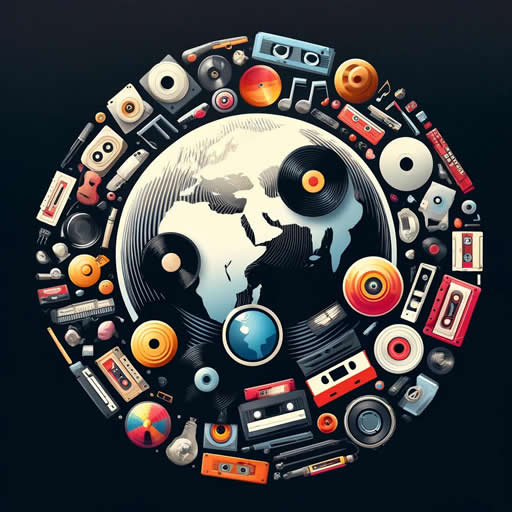The History of Rock and Roll Memorabilia: From Elvis to The Beatles
Key Takeaways
– Rock and roll memorabilia reflects pivotal cultural moments, from the early days of the genre to modern collectibles.
– Artists like Elvis Presley and The Beatles have had a profound impact on music and memorabilia trends.
– The evolution of memorabilia is marked by a shift from traditional items to digital collectibles.
Rock and roll isn’t just a genre of music; it’s a cultural phenomenon that transformed societies across the world. Its memorabilia serves as iconic reminders of its rich history, capturing moments that defined generations. From the wild rhythm of the 1950s to the transformative British Invasion, the tapestry of rock and roll is as diverse as the memorabilia it inspired.
The Early Days of Rock and Roll
The 1950s marked the birth of rock and roll, a time when rhythm and blues merged with country and gospel to create something entirely new and electric. Pioneers like Elvis Presley, Chuck Berry, and Little Richard introduced the world to sounds that had never been heard before. Elvis, often hailed as the “King of Rock and Roll,” not only revolutionized music with his voice and hip-shaking performances but also influenced collectible culture. Items such as signed records, concert posters, and personal artifacts became highly sought after pieces of rock and roll memorabilia.
Related
– Discover more about The Birth of Rock ‘n’ Roll and its transformative impact on music.
During these early years, memorabilia primarily consisted of concert tickets, promotional posters, and vinyl records. Collectors today treasure these pieces not only for their artistic and musical significance but also for their historical value, reflecting the dawn of a cultural era.
The British Invasion
The 1960s saw a seismic shift in the music landscape with the arrival of the British Invasion. Bands like The Beatles, The Rolling Stones, and The Who stormed onto the international scene, bringing with them a new wave of sound and style. The Beatles, in particular, not only shaped music history but also redefined what it meant to be a fan. Beatlemania spread like wildfire, and so did the fervent desire to own a piece connected to the Fab Four.
Beatles memorabilia, from ticket stubs of legendary concerts to John Lennon’s iconic round glasses, holds immense value both in terms of nostalgia and economic worth. These collectibles remind us of a time when rock music was not only a soundtrack but a catalyst for social change.
Related
– Delve deeper into The Evolution of Rock ‘n’ Roll After 1959 and its broadening horizons.
The Rise of Iconic Artists
The storyteller aspect of rock and roll didn’t diminish after the British composers. In the late 60s and throughout the 70s, artists like Jimi Hendrix, Led Zeppelin, and Janis Joplin carried the torch. These artists, with their distinct sounds and flamboyant personas, further expanded the universe of memorabilia. Jimi Hendrix’s guitars, particularly those he played on stage, remain highly coveted. His autographs, rare due to his short life, are priceless artifacts for collectors.
Likewise, Led Zeppelin’s tour memorabilia provides a glimpse into their rock lifestyle and is highly prized by fans and collectors alike. As music evolved, so did the items of memorabilia cherished by fans, shifting from simple concert mementos to more intimate storytelling pieces.
Related
– Explore the unique charm of Jimi Hendrix Autographs and their significant cultural impact.
How Music Memorabilia Has Evolved Over Time
The journey of rock and roll collectibles is one of rich diversity, echoing the changing trends and technology of the times. Memorabilia has expanded from physical items like records and posters to include digital collectibles, such as NFTs and digital autographs. This evolution reflects the dynamic nature of music memorabilia collecting and the ongoing relationship between artists and their fans.
Today’s collectors not only seek items that resonate with personal memories but also look for pieces that are rare and unique. The methodology of collecting has also shifted. Where once it was a matter of chance encounters at garage sales or flea markets, now it’s a sophisticated pursuit involving online auctions and dedicated memorabilia marketplaces.
Whether through traditional forms or digital innovations, music memorabilia continues to captivate collectors around the world, offering both nostalgic exploration and financial potential.
Related
– Learn about The Evolution of Music Memorabilia from Elvis to Taylor Swift in a digital age.
Editor’s Picks
- Explore how Grunge and Hip-Hop Redefined Music Memorabilia in the 1990s.
- Dive into the Timeless Appeal of Rock Vinyl and universal fascination with tangible music formats.
- Understand the essentials of Collecting Music Tour Merchandise with practical tips.
The story of rock and roll memorabilia is as soulful as the music itself. It tells of eras past, reflects societal change, and shares the intimate connection between fans and their musical heroes. In whatever form, these collectibles preserve the legacy of rock and roll, ensuring its beat continues thumping in the hearts of collectors and music lovers.
